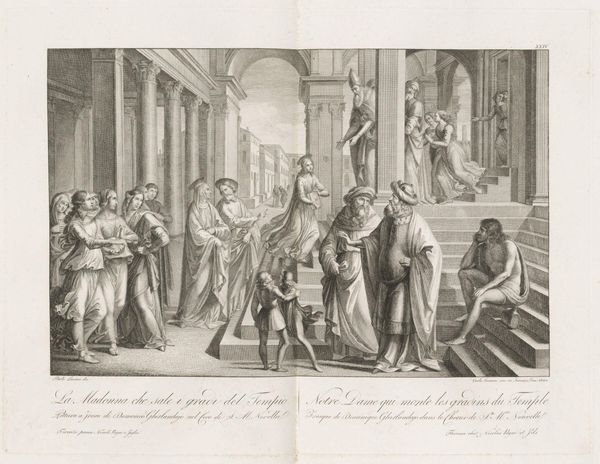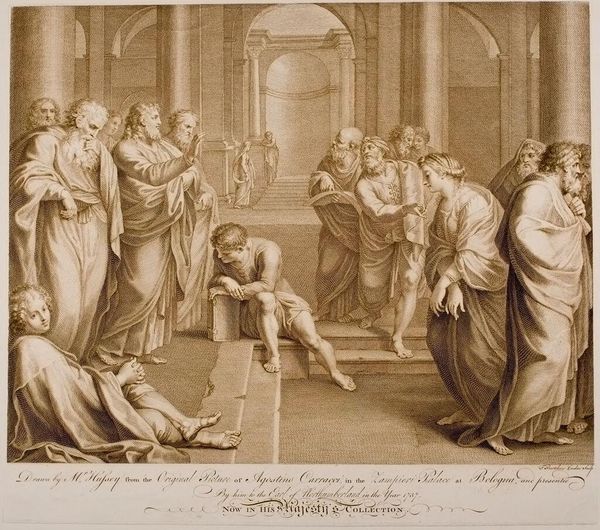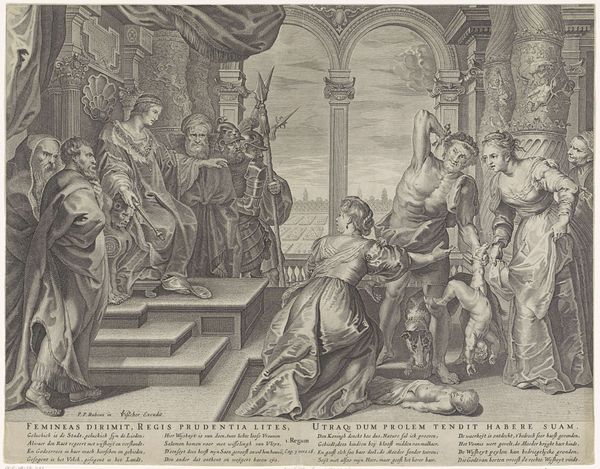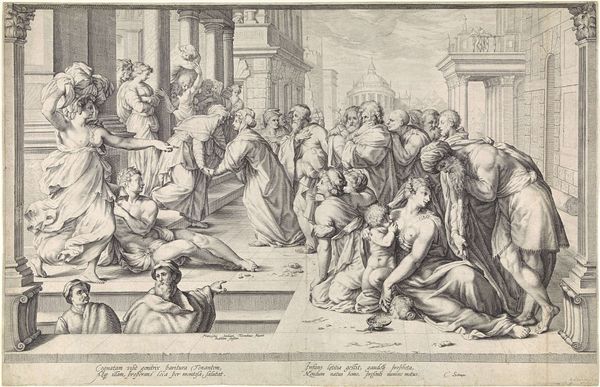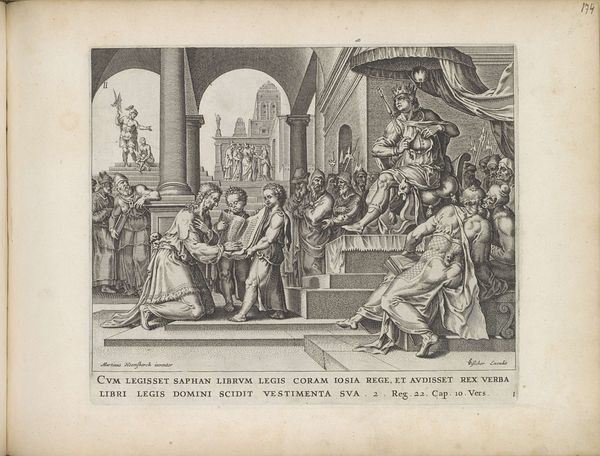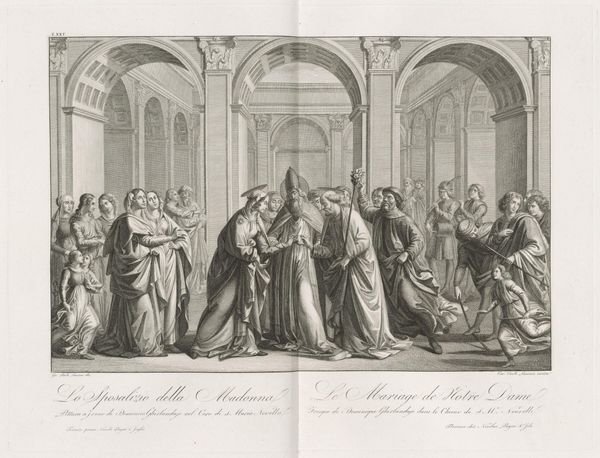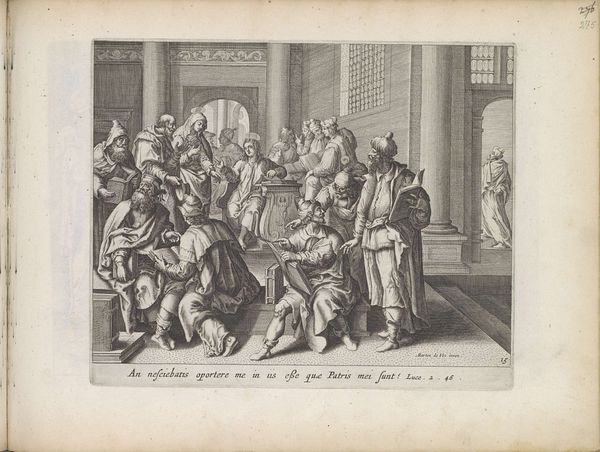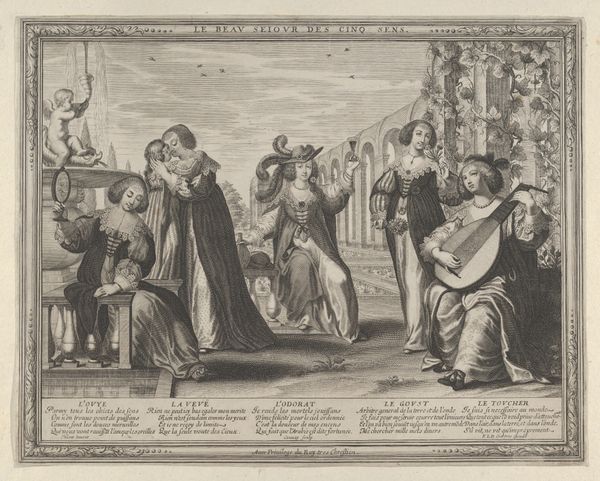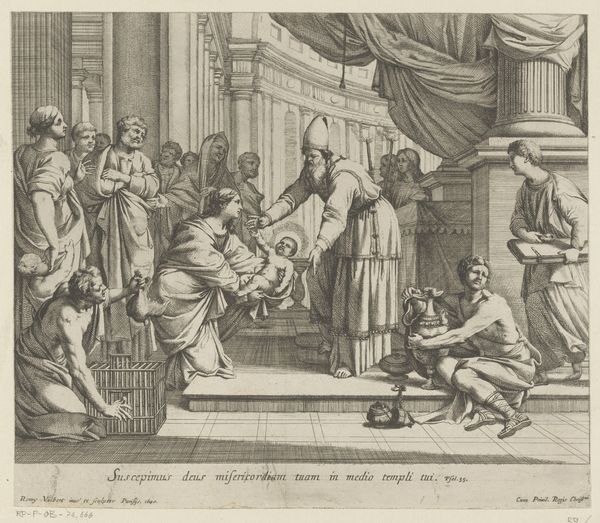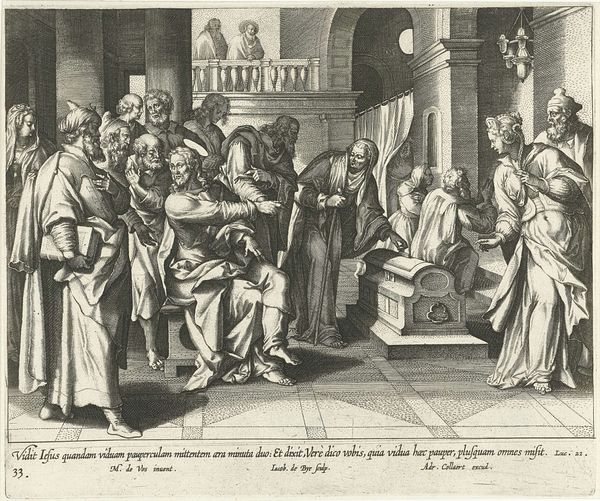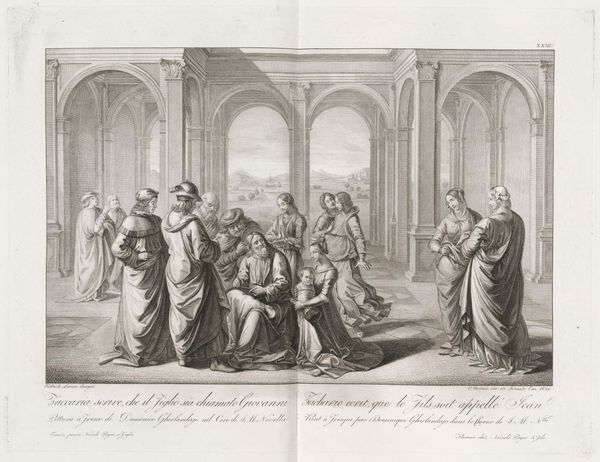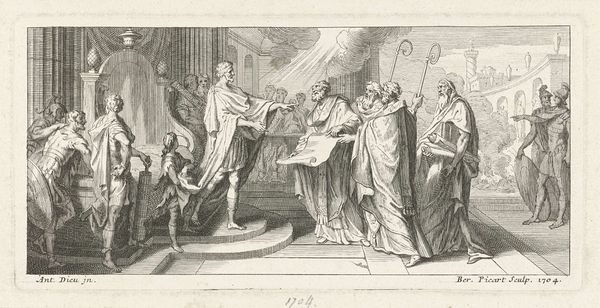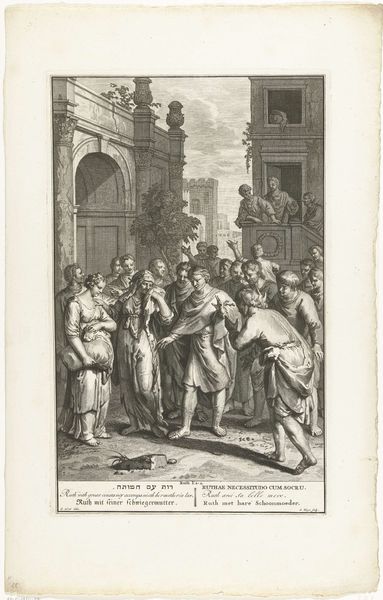
Dimensions: height 374 mm, width 440 mm
Copyright: Rijks Museum: Open Domain
Curator: This print, "Christus en de overspelige vrouw" after Agostino Carracci, likely made between 1738 and 1815 by Francesco Bartolozzi, intrigues me. It’s a reproduction, an engraving. The materiality is secondary, but the act of reproduction itself… Editor: Yes, I was struck by how controlled the line work is. It almost feels…mass-produced. What draws your attention to this piece? Curator: Consider the engraving process itself. It's not spontaneous creation; it's about careful translation, using specific tools and a learned technique to replicate an existing image for a potentially wide audience. Think about who that audience would be, and the economics that made it possible to have prints made in series and acquired for private collections. How does the meaning change when we consider its transformation from an Italian Baroque painting to an eighteenth-century British print? Editor: It’s interesting you bring up the shift in location. Do you think the change in artistic styles between Italy and England had anything to do with its fabrication, in addition to accessibility for mass production? Curator: Absolutely. Academic art demanded precision, order, and the demonstration of skill. But even more than stylistic changes, how did these changing production technologies change the perception and dissemination of art and the Bible? Editor: That's fascinating. I hadn't thought about it in terms of artistic labour, only subject matter. Curator: Exactly. Examining the means of production opens up avenues for understanding its cultural significance. Editor: I now see how a closer look at materials and processes lets me appreciate the piece and the changes that it has gone through. Thanks!
Comments
No comments
Be the first to comment and join the conversation on the ultimate creative platform.
